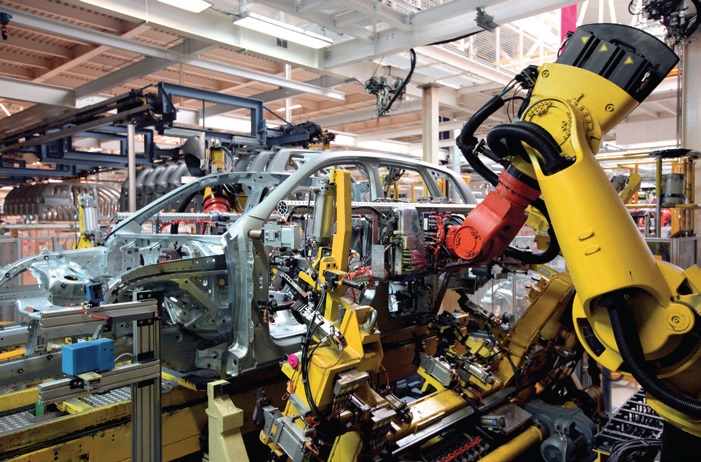Steps to engaging the plant customer
Don Smolenski | TLT Machinery February 2019
What I learned from implementing a lubrication standard at GM plants.

Properly implemented, a lubrication program gives plant people a better understanding and respect for how our products can improve their processes.
© Can Stock Photo / microolga
Good lubricants in manufacturing plants are key to low downtime, quality production and reduced maintenance costs. During my GM career I was fortunate to be asked to address how GM specified, procured, maintained, recycled and disposed of plant lubricants.
Being an engine oil guy, my first instinct was to see which specifications were being used. When I became involved, the standard in place for plants was a 10-year-old “LS2” Fisher Body Materials Spec. The fact that it was not good enough—covering viscosity, rust and a few other tests—was irrelevant because there was no awareness of it in the plants anyway. It appeared that doughnuts, baseball caps and pizza provided by lubricant suppliers were the primary criteria for product selection (maybe a bit of an exaggeration but often not far from the truth!).
The second and most important task was visiting the plants. The proper contact person in any given plant might have been in maintenance, environmental or other areas; may have been salaried or hourly; and might or might not have been a degreed individual.
Plant visits generally started with brief introductions and a description of how I hoped to accomplish building more rigor around how GM sources and manages plant lubricants. The rest of the meeting was spent asking them questions. What are your highest volume and most important lubricants? What are your most pressing lube-related problems? And so on.
Nearly all of the plant people were frustrated about perennial problems and passionate about doing a better job. I pledged to help them but also asked for their advice and help. There was certainly initial skepticism about “a headquarters guy,” but a second visit usually dispelled that and built trust. At GM’s plant in Willow Run, Mich., I was nicknamed the Blue-Collar Ph.D., which I took as a tremendous compliment.
Gaining support from these initial plants was key to successfully engaging other plants. All the plants had a handful of common problems and knowing them bought me some street cred. Treating each plant member with respect and absolute honesty also is critical. Plant folks are rarely shy about speaking their minds.
With the plants’ help, we were able to:
•
Build a comprehensive specification (GM LS2) for manufacturing lubricants.
•
Construct a rigorous approval process (in God we trust—all others must bring data!).
•
Obtain submissions from suppliers to generate an approved-products list.
•
Require the plants to switch to approved products. When I first proposed this to the LS2 Committee, I suggested what I thought was a reasonably aggressive time frame. Their unanimous response, however, was, “Why the heck (OK, a little more definitive than that) are we waiting that long?” It’s a wonderful thing to have your customer push for having your initiative done sooner!
•
Address and replicate best practices for maintaining plant lubricants.
•
Expand the specification into a useful handbook (really useful for insomniacs).
•
Build a great camaraderie among the plants.
This last point was extremely crucial to the success of the program and exceptionally rewarding.
Over several years, we accomplished the following:
•
Of the products used in the North American plants required to be LS2 approved, more than 92% by volume were. This allowed for product consolidation, less confusion and lower costs for better lubricants.
•
Downtime and repair costs were reduced.
•
Plant people better understood and respected lubricants and drove better lubrication practices in their plants.
When we started, I honestly didn’t believe we would be able to make such a dramatic change in lubrication practices in GM North American plants. My greatest personal accomplishment, however, was gaining the mutual respect and friendship of so many fine plant people!
I learned much from my LS2 Committee.
Don Smolenski is president of his own consultancy, Strategic Management of Oil, LLC, in St. Clair Shores, Mich. You can reach him at donald.smolenski@gmail.com.